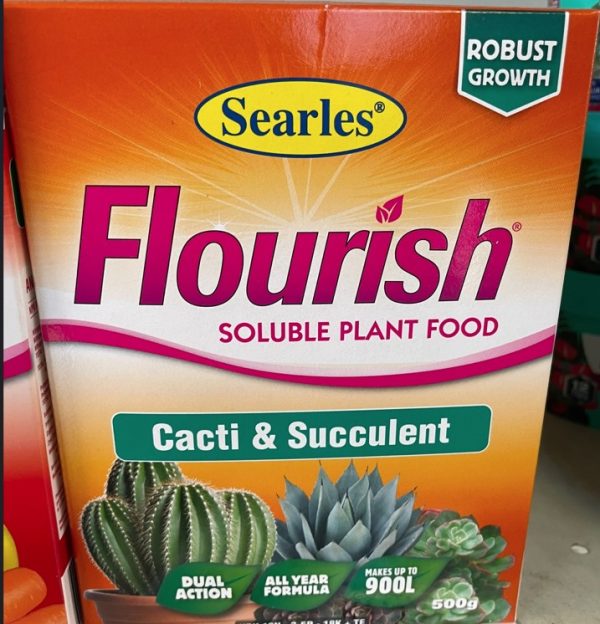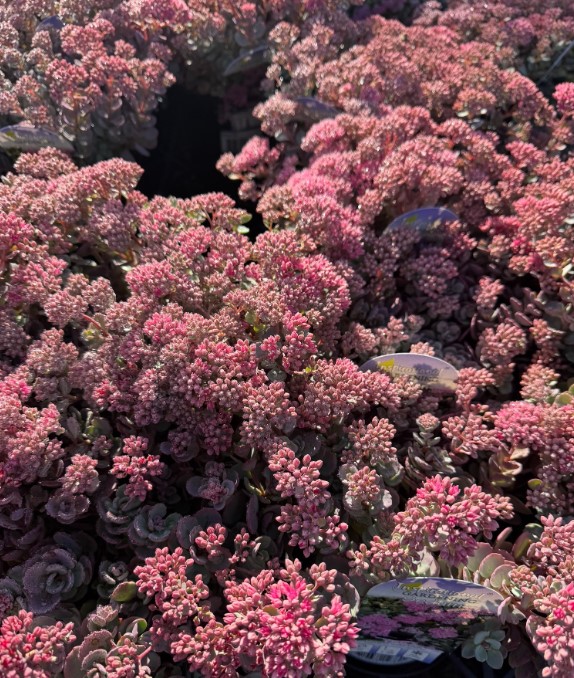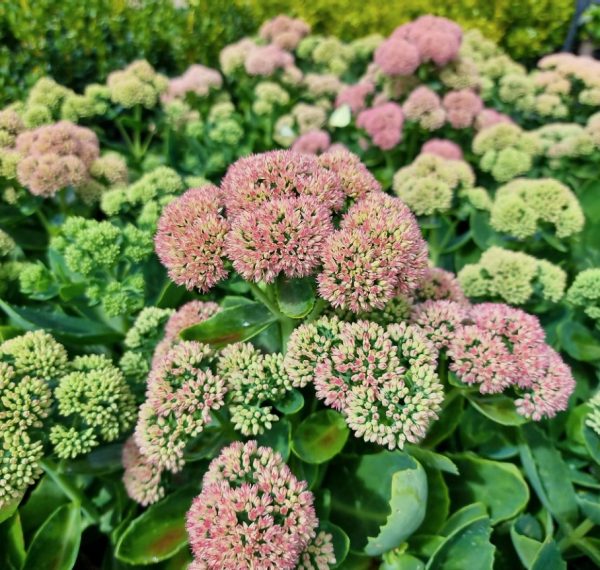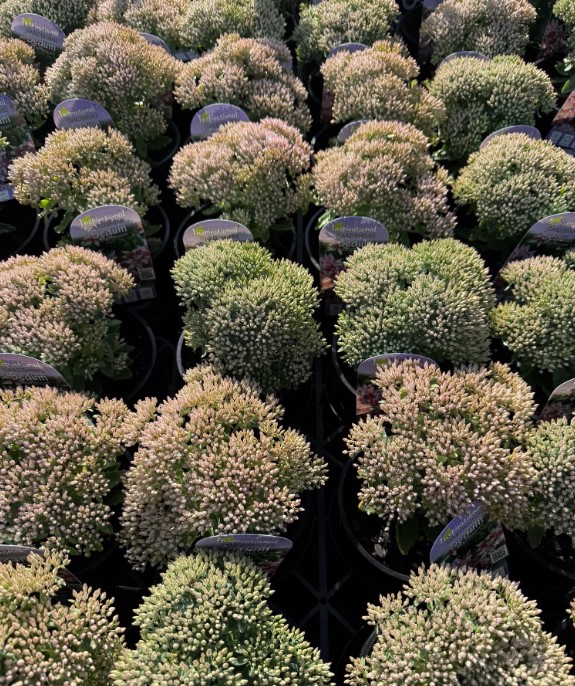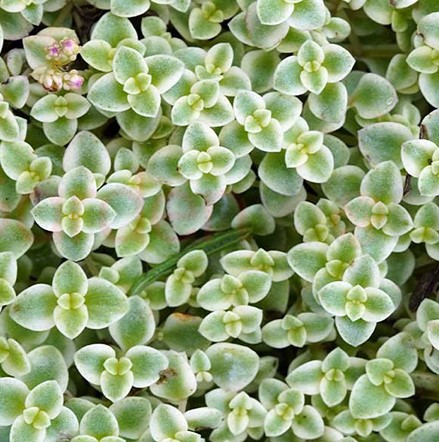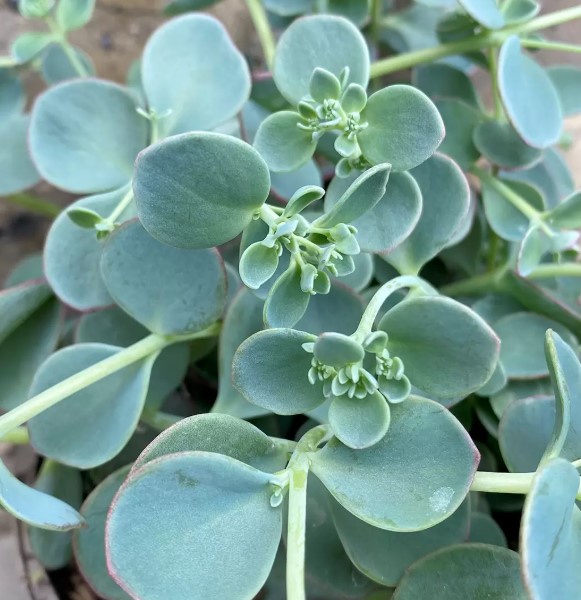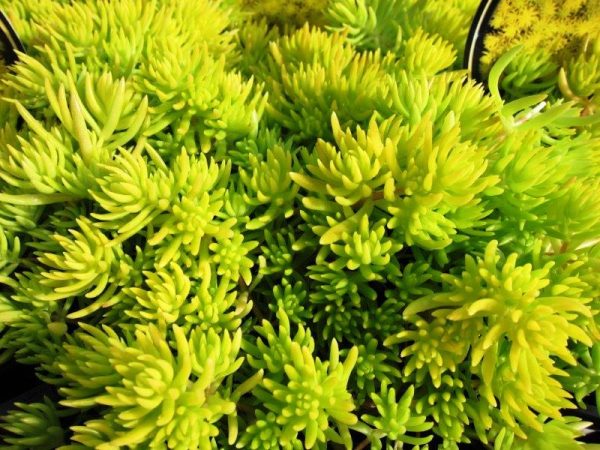Sedum spathulifolium ‘Cape Blanco’ – A Stunning Silver Groundcover
Sedum spathulifolium ‘Cape Blanco’, commonly known as Broadleaf Stonecrop, is a striking, low-growing perennial succulent native to the Pacific Northwest of North America. It is admired for its powdery silvery-blue foliage, compact rosette-forming habit, and vibrant yellow flowers that bloom in late spring and early summer. This highly adaptable, drought-tolerant plant is perfect for rock gardens, green roofs, containers, and dry landscapes where low maintenance and year-round interest are desired.
Foliage and Growth Habit
One of the most attractive features of ‘Cape Blanco’ is its stunning spoon-shaped leaves, which are densely packed into tight, low-growing rosettes. These leaves are coated in a fine, powdery farina, giving them their characteristic silvery-white appearance.
- Leaf Color: Silvery-blue to powdery white, sometimes with a purple or reddish tinge in cooler temperatures.
- Growth Habit: Spreading, mat-forming succulent, excellent for groundcover or cascading over edges.
- Seasonal Changes: Leaves take on deeper red-purple hues in fall and winter, adding seasonal interest.
- Height & Spread:
- Grows 10–15 cm (4–6 inches) tall.
- Spreads 20–30 cm (8–12 inches), creating a soft, silvery carpet effect.
Blooming Period and Flowers
In late spring to early summer, ‘Cape Blanco’ produces eye-catching clusters of star-shaped yellow flowers. These blooms create a stunning contrast against the silvery foliage and attract pollinators, making this plant an excellent choice for wildlife-friendly gardens.
- Flower Color: Bright golden yellow.
- Flower Shape: Small, star-like flowers forming compact umbel-shaped clusters.
- Bloom Time: Late spring to early summer (October – January, depending on climate).
- Pollinator-Friendly: Attracts bees, butterflies, and other beneficial insects.
Ideal Growing Conditions
Sunlight Requirements
☀ Full Sun to Partial Shade – Thrives in full sun, where its foliage develops its most intense silver-white hue. Can tolerate light shade, though too much shade may reduce compactness and vibrant coloration.
Soil Preferences
🌱 Well-Draining Soil – Prefers sandy, gritty, or rocky soils that drain quickly. It struggles in heavy clay or moisture-retentive soils, which can cause root rot.
- Ideal pH: Neutral to slightly acidic (pH 6.0–7.0).
- Works well in poor, nutrient-deficient soils, making it ideal for difficult areas.
Watering Needs
💧 Drought-Tolerant – Once established, ‘Cape Blanco’ requires minimal watering and thrives in dry conditions.
- Water only when the soil is dry; too much moisture leads to rot.
- Can survive extended dry periods, making it perfect for xeriscaping.
- In containers, water sparingly, allowing the topsoil to dry out completely between waterings.
Hardiness & Climate Adaptability
❄ Cold-Hardy – Unlike many sedums, ‘Cape Blanco’ is incredibly resilient to cold and can tolerate temperatures as low as -23°C
- Winter Dormancy: May experience some dieback in extremely cold winters but will regrow in spring.
Best Uses in Landscaping
✅ Groundcover: Forms a dense, weed-suppressing carpet, ideal for covering small areas.
✅ Rock Gardens: Thrives in rocky, well-drained soils and provides a soft contrast to hard stone textures.
✅ Green Roofs: Due to its shallow root system and drought resistance, it is excellent for living roofs.
✅ Containers & Hanging Baskets: Perfect for pots and troughs, where its trailing stems can cascade over edges.
✅ Dry Slopes & Retaining Walls: Helps stabilize loose soil on slopes and adds visual interest in vertical spaces.
✅ Pollinator Gardens: Supports local bee and butterfly populations with its nectar-rich flowers.
Maintenance and Propagation
✂ Pruning & Deadheading:
- Remove spent flower stems after blooming to encourage fresh foliage growth.
- Trim back any damaged or leggy growth in early spring to maintain shape.
🌱 Propagation:
- Stem Cuttings: Break off healthy rosettes, let them dry for a day, and plant in well-draining soil.
- Division: Easily propagated by dividing larger clusters every 2–3 years.
- Self-Spreading: Over time, ‘Cape Blanco’ will naturally spread through offsets, filling in gaps.
🐜 Pest & Disease Resistance:
- Highly resistant to pests and diseases, though it may occasionally attract mealybugs or aphids.
- Root rot can occur if exposed to excessive moisture; ensure proper drainage.
Why Choose ‘Cape Blanco’?
✔ Unusual Silvery-Blue Foliage – Unique powdery-white rosettes add soft contrast in garden beds.
✔ Tough & Resilient – Survives heat, drought, and cold with minimal care.
✔ Cold-Hardy & Low-Maintenance – Thrives with little intervention.
✔ Excellent for Containers & Borders – Beautiful when spilling over the edges of pots or walls.
✔ Great for Pollinators – Attracts bees and butterflies while adding seasonal interest.
Sedum Cape Blanco
Sedum spathulifolium ‘Cape Blanco’ is an exceptional choice for gardeners looking for a tough, low-maintenance groundcover with striking silver-white foliage. It offers year-round interest, thrives in dry and rocky conditions, and requires minimal watering, making it ideal for water-efficient gardens, rockeries, and container plantings. Whether used in a coastal garden, alpine setting, or urban green roof, ‘Sedum Cape Blanco’ brings a unique touch of elegance and resilience to any landscape.

